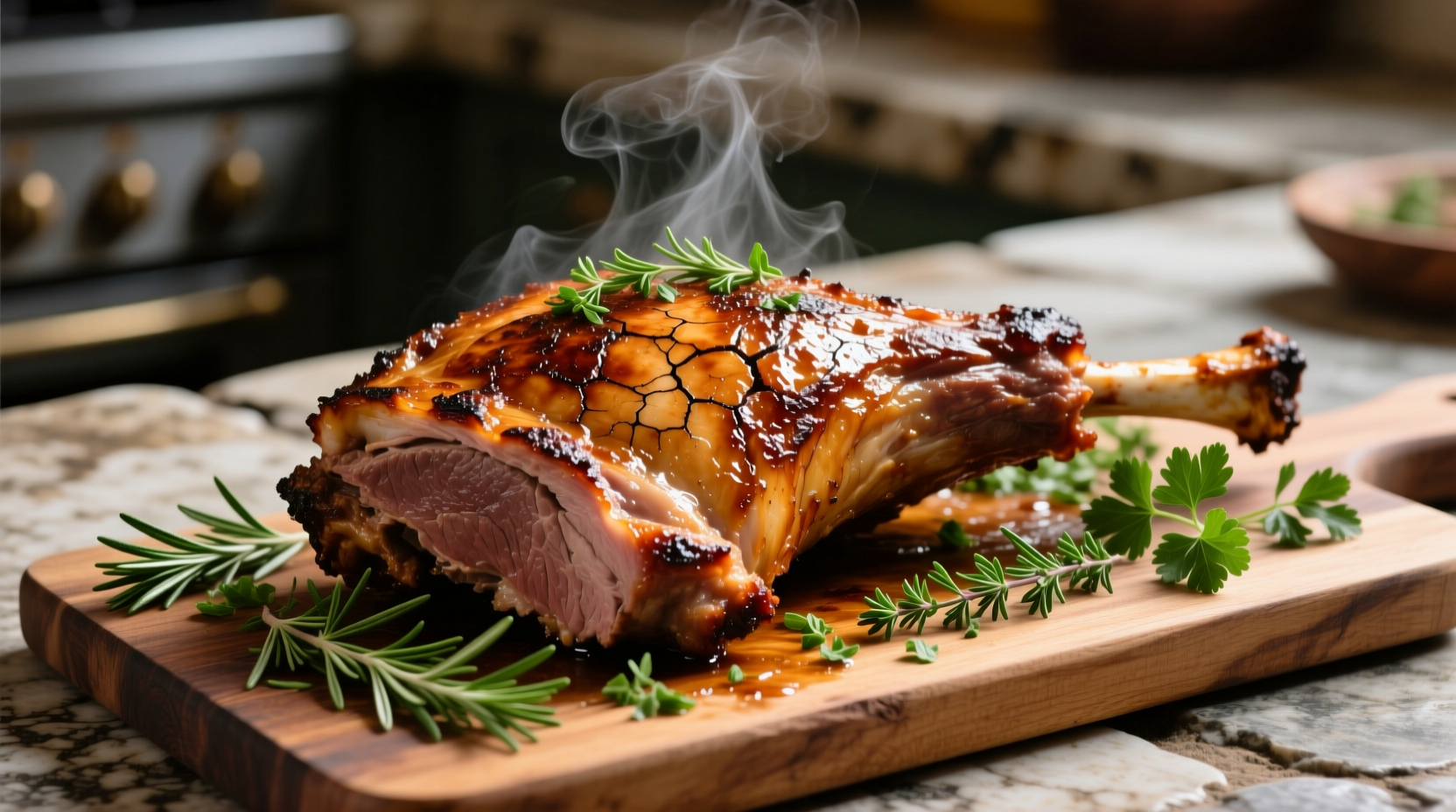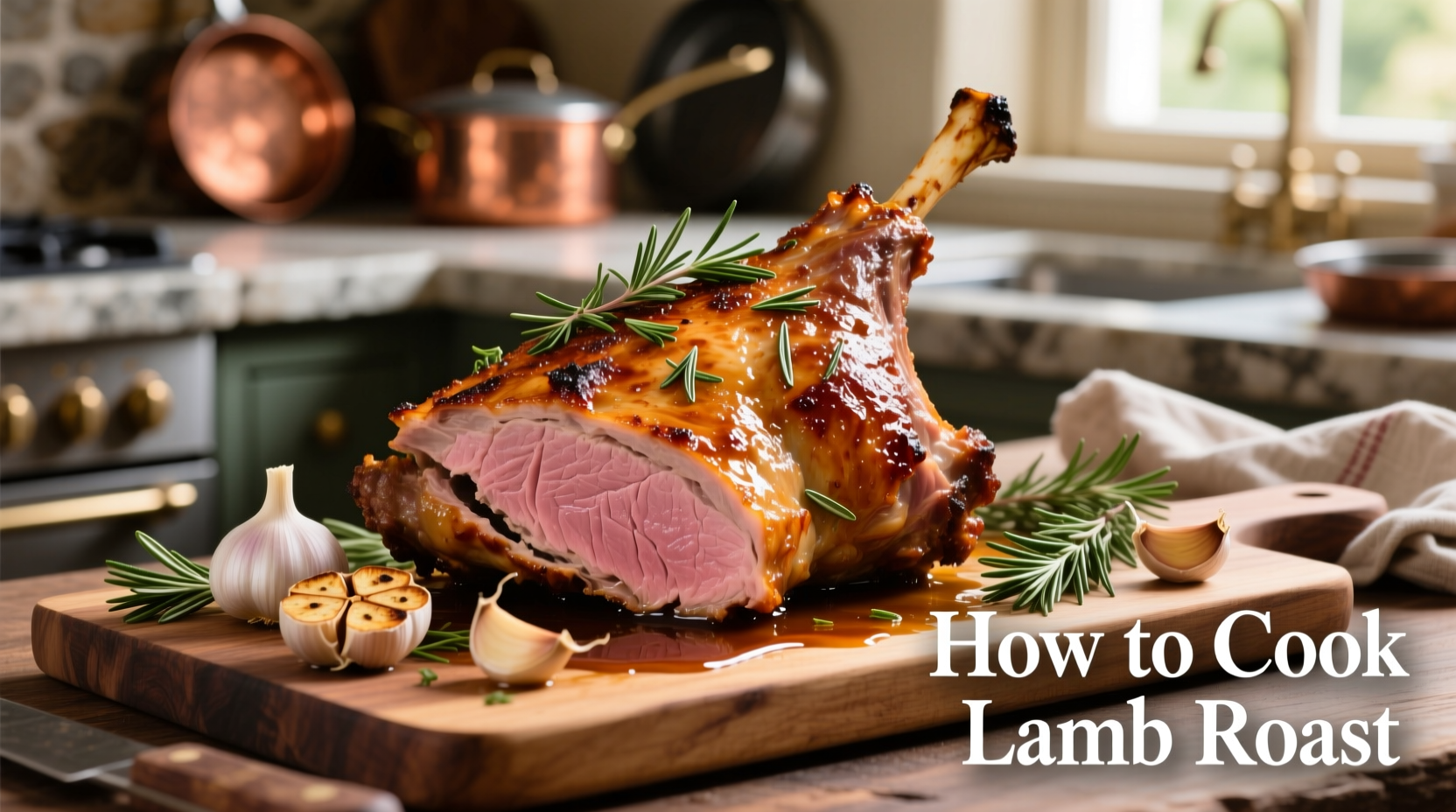The Essential Guide to Perfect Lamb Roast Every Time
Nothing impresses guests or elevates a Sunday dinner quite like a perfectly cooked lamb roast. With the right technique, you can transform this elegant cut into a show-stopping centerpiece that's juicy inside with a beautifully caramelized exterior. Professional chefs rely on precise temperature control and strategic resting periods to achieve restaurant-quality results at home—and you can too.
Why This Method Works: The Science Behind Perfect Roasting
Lamb roast success hinges on understanding two critical food science principles: the Maillard reaction for flavor development and proper protein denaturation for texture. When lamb hits 300°F (149°C), amino acids and sugars interact to create complex roasted flavors. Meanwhile, cooking to precise internal temperatures ensures myoglobin (the protein responsible for meat's red color) transforms without squeezing out precious juices.
| Degree of Doneness | Internal Temperature | Visual Characteristics | Resting Time |
|---|---|---|---|
| Rare | 120-125°F (49-52°C) | Bright red center, very soft | 15 minutes |
| Medium-rare | 130-135°F (54-57°C) | Pink center, warm red | 20 minutes |
| Medium | 140-145°F (60-63°C) | Light pink center | 25 minutes |
| Medium-well | 150-155°F (66-68°C) | Slightly pink center | 30 minutes |
Selecting Your Lamb: Cuts That Deliver Maximum Flavor
Not all lamb roasts perform equally. The USDA Meat and Poultry Hotline confirms that leg of lamb and rack of lamb respond best to dry-heat roasting methods. Leg of lamb (bone-in or boneless) offers even cooking and impressive presentation, while rack of lamb provides individual portions with elegant presentation. Shoulder roast works for slow roasting but lacks the refined texture of premium cuts.
Avoid pre-packaged 'oven-ready' roasts with excessive liquid in the tray—this indicates poor handling practices that affect flavor. Instead, seek out butchers who age lamb for 14-21 days; this enzymatic process breaks down connective tissue, enhancing tenderness without compromising structure.
Preparation: The 24-Hour Secret to Flavor Penetration
Professional chefs use a technique called 'dry brining' that transforms flavor absorption. Score the fat cap in a diamond pattern, then rub with coarse salt (1 teaspoon per pound) 24 hours before cooking. This draws out moisture initially, then pulls seasoned liquid back into the meat during the resting period. For herb crusts, apply fresh rosemary, thyme, and minced garlic only 30 minutes before roasting to prevent browning.

The Precision Roasting Method: Step-by-Step
Follow this professional kitchen technique for guaranteed results:
- Bring to room temperature: Remove lamb from refrigerator 2 hours before cooking
- High-heat sear: Preheat oven to 450°F (232°C), roast uncovered for 15 minutes
- Temperature adjustment: Reduce heat to 325°F (163°C) without opening oven
- Monitor internal temperature: Insert probe thermometer into thickest part
- Rotate for even cooking: Turn pan 180 degrees halfway through cooking
- Check progress: Baste with pan juices only during last 30 minutes
Cooking time varies by weight and desired doneness. As a general rule, allow 15-20 minutes per pound at 325°F (163°C) after the initial sear. A 4-pound leg of lamb typically requires 60-80 minutes total roasting time after searing to reach medium-rare.
The Critical Resting Phase: Why Patience Pays Off
Immediately after removing from oven, tent loosely with foil and rest for 20 minutes. During this period, internal temperature rises 5-10°F (the 'carryover cooking' effect), and juices redistribute throughout the meat. Cutting too soon releases up to 40% of the precious moisture according to research from the Culinary Institute of America. This resting period transforms texture from stringy to succulent.
Carving Like a Pro: Technique Matters
Position the roast with the shank bone pointing away from you. For leg of lamb, slice perpendicular to the bone in 1/4-inch thick slices. For rack of lamb, hold the bone upright and slice downward between ribs. Always cut against the grain—identify the direction of muscle fibers and slice perpendicular to them for maximum tenderness.
Common Mistakes That Ruin Lamb Roast
Avoid these pitfalls that even experienced home cooks encounter:
- Overlooking oven calibration: Home ovens often vary by 25°F—use an independent oven thermometer
- Ignoring carryover cooking: Remove lamb 5°F below target temperature to prevent overcooking
- Using wet herbs: Moisture steams rather than roasts the surface—pat herbs dry before application
- Cutting too soon: Resting time is non-negotiable for juicy results
Serving Suggestions That Elevate Your Dish
Pair your perfectly roasted lamb with complementary flavors that enhance without overpowering. Mint sauce remains a classic pairing, but modern chefs recommend pistachio gremolata (chopped pistachios, lemon zest, and parsley) for nutty complexity. Roasted root vegetables caramelized in the lamb's fat add depth, while a red wine reduction made with the pan drippings creates a restaurant-worthy sauce.
Food Safety Essentials for Lamb Preparation
The USDA Food Safety and Inspection Service mandates that lamb reaches minimum internal temperatures to eliminate pathogens. While medium-rare (130-135°F) is preferred by chefs, ensure food safety by:
- Using a calibrated digital thermometer
- Cleaning surfaces that contact raw meat with hot, soapy water
- Storing leftovers within 2 hours of cooking
- Reheating to 165°F (74°C) for leftovers











 浙公网安备
33010002000092号
浙公网安备
33010002000092号 浙B2-20120091-4
浙B2-20120091-4